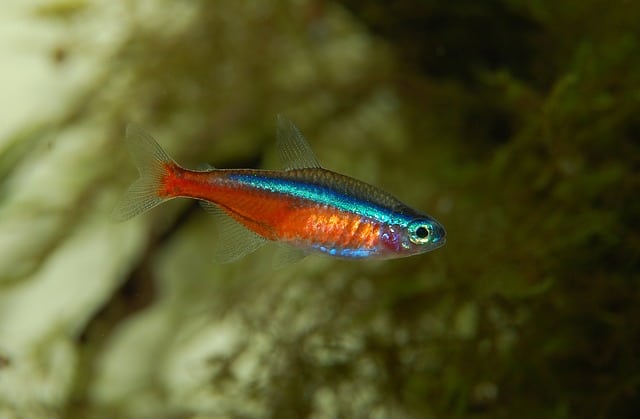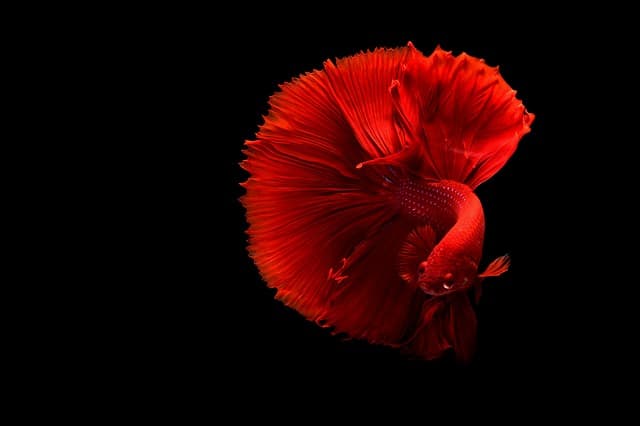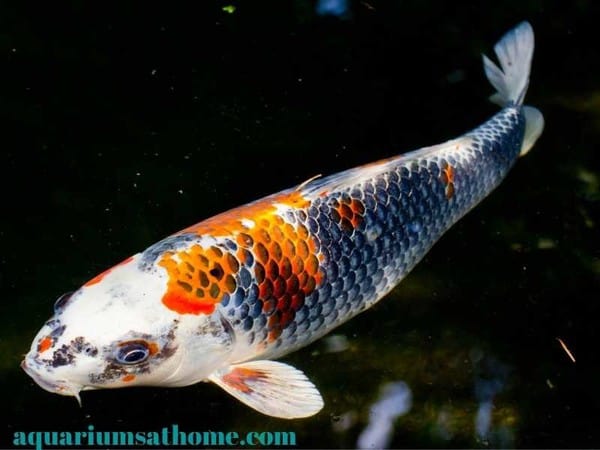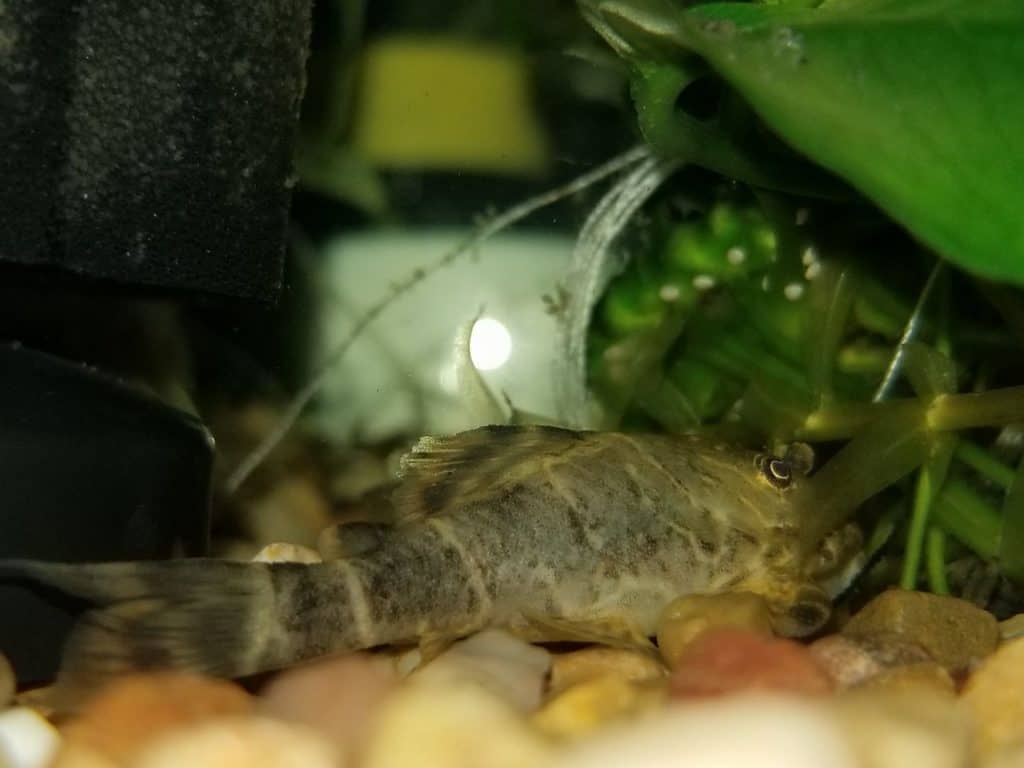Angelfish are one of the most popular and beautiful species of cichlid fish. A long-time favorite among freshwater aquarists, these fish are quite hard yet there may be times when they refuse food. As an both aquarium hobbyist and pet owner, this may be a cause of concern. So, what are the reasons why freshwater angelfish stop eating?
The 5 reasons why your angelfish aren’t eating include poor water conditions, nutrient deficiencies, illness, stress, and environmental changes. Remedying the situation is dependent upon pinpointing the exact cause and then administering proper treatment.
Now that you know the 5 main causes of angelfish refusing food in captivity, let’s explore this topic together in more detail. We’ll look at each cause individually as well as explore the correct course of action for each. We’ll also learn how long angelfish can go without eating, how to get them eating again, what foods are best, and what water parameters are recommended.
So, if you’re ready to learn more about angelfish loss of appetite and how to restore healthy eating habits, then let’s begin!
Why is My Angelfish not Eating?
There are 5 main reasons why angelfish in captivity stop eating. These include the following:
Poor Water Conditions
Fluctuations in water chemistry is a leading cause of angelfish refusing to eat. Abrupt changes in temperature and/or pH levels as well as a sharp increases in toxic compounds (ammonia, nitrates, and nitrites) can all contribute to a loss of appetite.
Inadequate water parameters are often the result of an inefficient filter or excess food, fecal matter, or dead plants left to rot in the aquarium. Upgrading to a high-quality hang-on-back (for smaller tanks) or cannister filter (for larger tanks) is recommended as well as bi-weekly partial water changes.
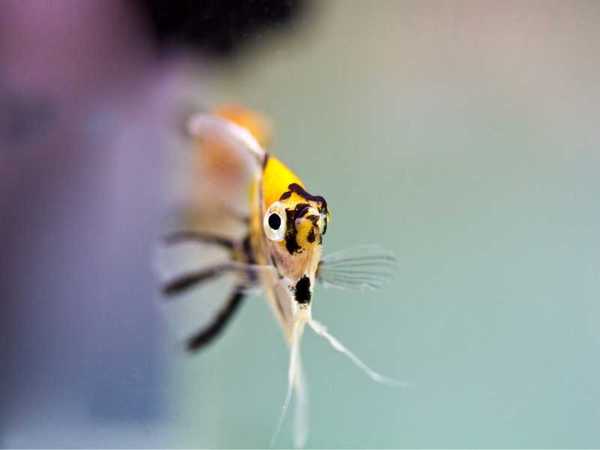
Nutrient Deficiencies
Lack of food variety is another cause of angelfish refusing to eat. This species is omnivorous and therefore thrives on a diet of both plant- and meat-based foods. If they’re only fed one type of food, they’ll likely become bored and stop eating. Their overall health will also suffer due to lack of nutrition.
If you offer a mix of both green and meaty foods and your angelfish still won’t accept them, you can enrich the water with a vitamin supplement like Vitachem. Available online through Amazon, this product works to stimulate appetite while helping to prevent nutrient deficiencies.
Illness
Sickness is yet another possible cause of angelfish refusing to eat. To determine if illness is the cause, check for typical symptoms of disease such as lethargy, loss of color, white/black/red spots, erratic swimming, hiding, laying motionless along the substrate, or floating listlessly near the surface.
If your angelfish appears to be ill from a bacterial or parasitic infection, move it to a quarantine tank with adequate and stable water parameters. Begin treating it with the appropriate medication and consider adding a bit of freshwater aquarium salt to the tank to aid in recovery.
Stress
Stress is a typical cause of angelfish refusing to eat. An overcrowded tank or bullying by other fish can both contribute to your pet’s loss of appetite. Look for signs of aggression such as chasing each other, nipped fins, or open sores on the body to determine if external tension is the culprit.
Lack of oxygen in the water can also cause stress and lead to internal tension among angelfish. Watch for labored breathing and rapid gill movements. Adding an air pump to the tank will help create surface agitation and get oxygen molecules moving in the water.
Environmental Changes
Physical changes to their environment is yet another cause of angelfish refusing to eat. This species is territorial and likes to claim its own space in an aquarium. Rearranging the plants, rocks, decorations, etc. in the tank will upset your pet, likely leading to loss of appetite.
Putting the aquarium back to the way it was originally should get your angelfish eating again. If you can’t recreate the initial setup, your fish will eventually get used to the new tank design and claim a different territory – though this may take time and your pet’s overall health could suffer in the interim.
How Long Can Angelfish Go without Eating?
Angelfish in captivity can typically live between 3 to 7 days without eating. Juveniles likely won’t last more than a few days without food whereas as adults can live up to a week (or even longer). The length of time they can go without food is directly related to age, size, and overall well-being. The healthier the fish, the longer it can sustain itself.
How do I Make My Angelfish Eat?
Angelfish in captivity can become finicky when it comes to food. If you’ve noticed recently that your pet is becoming a ‘picky’ eater, you may have to make some changes to its diet. Try feeding it less so often – instead of twice a day, try once. It may be more apt to eat when food isn’t so plentiful. As well, offer it a new type of food. It could just be that your pet is bored with its usual meals.
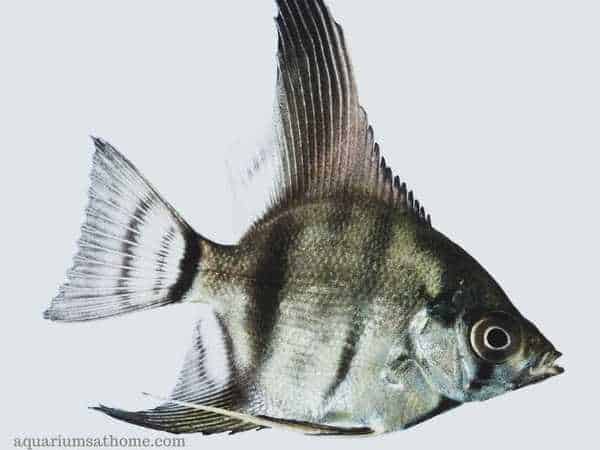
What Food are Best for Angelfish?
This species is primarily carnivorous and therefore, prefers to feast on meaty edibles. A diet comprised mainly of cichlid flakes and pellets along with some live food such as brine shrimp and blood worms is recommended. Small crustaceans and insects can also be offer on occasion.
Juvenile angelfish should be fed more often – typically 3 to 4 times per day. Once they reach adulthood, you can cut back to twice a day. There was to tell if your fish is hungry. Watch for the following 5 signs to determine if its in need of nourishment:
- Digging around the substrate.
- Waiting near the top of the tank.
- Unusually aggressive behavior.
- Noticeable change in weight.
- Sluggish or inactive behavior.
What Water Parameters are Best for Angelfish?
Inadequate water parameters are a common cause of angelfish refusing to eat. For heathy, active fish with good appetites, ensure the temperature of your tank is between 78- and 84-degrees Fahrenheit. Though they can adapt to a wide range of aquatic conditions, they prefer water on the warmer side.
The ideal pH range for an angelfish tank is 6.8 to 7.8 with a hardness between 54 and 145 ppm. Keeping the tank as clean as possible is important. Bi-weekly partial water changes (15% to 25%) are encouraged. If you a heavily stocked tank, you’ll need to do it weekly or remove more water (30% to 40%) bi-weekly.
Final Thoughts
To summarize, there are typically 5 reasons why angelfish in captivity refuse food. These include poor water conditions, nutrient deficiencies, illness, stress, and environmental changes. Figuring out which one is the cause will help you determine the best course of action.
I trust this article has answered your questions about why angelfish lose their appetite and how to get them eating again. Thanks for reading and good luck with your aquarist hobby!
Recommended Posts
Simplified Freshwater Angelfish Care Guide for Beginners
Will Angelfish Kill Each Other?



